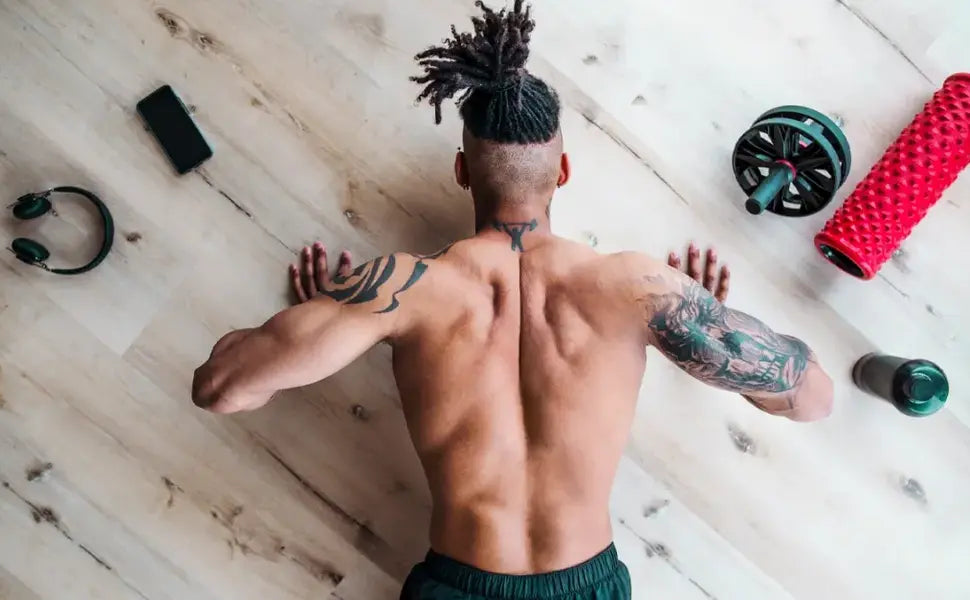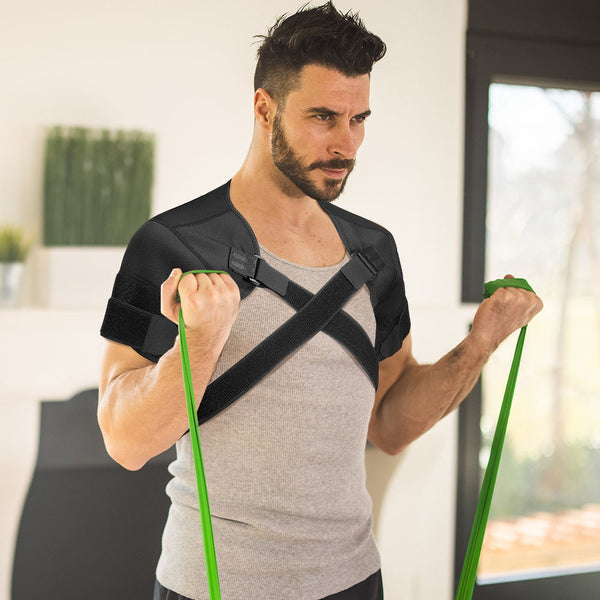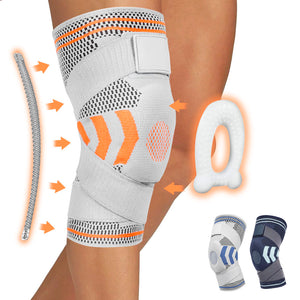Can a Shoulder Support Brace Fix Bad Posture

can help correct posture in the short term, but relying solely on a brace has limited effectiveness. It's recommended to combine brace use with back and core muscle exercises to develop good posture habits for longer-lasting improvement.
What is Bad Posture
may be generally defined as a non-natural, misaligned positioning of the head, shoulders, spine, or pelvis over long periods of time, placing additional stress on muscles, ligaments, and joints. The most common examples of poor posture are slouching, forward head tilt, rounded shoulders, and excessive spine curvature. It can result in fatigue, muscle tension, pain, or even chronic conditions such as shoulder and neck pain, lower back pain, and frozen shoulder if continuously practiced over a prolonged period.
Poor posture has become more prevalent due to lifestyle changes, whereby people are spending more time either sitting or looking down at their phones or computers. Long-term poor posture can affect the respiratory and circulatory systems by slowing the rate of blood flow and reducing physical efficiency. Shoulder support braces will provide physical supports to correct the problem by restoring normal alignment.
How Braces Work
The rationale behind shoulder support braces is the use of an external device of support, which adjusts the positions of the shoulders and upper back to help return the shoulder blades to their natural position, favoring alignment of the spine naturally. Most of these braces wrap onto the shoulders and upper back, pulling the shoulders back, opening up the chest, and assisting in maintaining an upright posture. The physical restraint of the brace acts as a prompt for the wearer to actively make changes in their posture and, over time, develops muscle memory to maintain better posture outside of the brace.
Brace use is required. One needs to remember that braces are not intended to be used all the time; rather, they are tools to remind the user at specific times—such as when working on the computer or standing for an extended period. The biggest problem with being in an orthosis brace for too long is that, if relied on too much, the muscles do nothing and it becomes increasingly difficult for the body to support itself. It is therefore important that muscle strengthening exercises be done while in the brace to ensure core muscles are strengthened along with scapular stabilizers, which support natural posture.

Types of Braces
Different types of shoulder support braces serve various functions and user groups. Here are two common types:
: This type of brace is designed to wrap around both shoulders for added stability. It is ideal for those with serious slouching or shoulder tilt and assists in compression support to draw the shoulders back and hold the spine in alignment. Being a double-shoulder support, it is meant for high-intensity correction of posture but must not be worn for very long to avoid hindering muscle activity.
Shoulder Brace for Dislocation: This brace will help in correcting the posture of your shoulder and provide more protection and support, something great for one who has an injury in the shoulder or arm. This can restrict the movements of the shoulder to give rest to the injured shoulder as the healthy side gets posture correction. It therefore will be ideal for people recovering from shoulder injuries including rotator cuff tears, dislocations, or shoulder surgery as it provides them with correct posture that reduces strain from the shoulders.
Who Needs One
It is not for everybody to wear a brace. Braces are ideal in cases of serious problems with posture or even for people who usually complain of aching in their back or shoulder, muscle tension, and chronic pain due to long periods of bad posture. Office workers who sit for long hours, those who always use phones or gadgets, those who lift heavy loads, and even teenagers whose postures are bad while growing can consider the use of shoulder support braces.
These also help people who are recovering from shoulder injuries or surgeries by on one's shoulder and maintaining posture. These, for such patients, can offer support and restriction of movement to help in recovery and prevent re-injury. However, the use of braces should be tailor-made to meet the needs of each particular individual. Bracing for the correction of posture in healthy individuals is not indicated for long-term use, as the musculature of the person may weaken and become dependent on the brace—a fact quite contrary to the goal of posture improvement.
Benefits of a Brace
A shoulder support brace is designed to help correct posture and equalize pressure across the shoulder and back muscles more evenly. The shoulder support brace pulls the shoulders back, helping to eliminate the tension of neck and shoulder muscles, which greatly relieves pain. A brace can also improve respiratory function. Where one slouches or does a shoulder roll, the chest cavity compresses and thus diminishes breathing efficiency. The brace opens the chest, allowing better lung expansion, improving oxygen supply and overall health.
Braces also serve as a posture reminder in everyday life. A lot of people subconsciously fall into bad posture, and the brace is a good reminder to keep good posture. Braces offer fantastic protection for those people who have injured their shoulders or torn their rotator cuff and do not allow them to re-injure it. In cases with people building back muscle strength, the support from the brace can allow the individual to maintain the proper posture at the beginning stages of recovery and allow them to not build up bad muscle memory.
Limitations of Braces
While the shoulder support braces are very effective in correcting posture and relieving a lot of pain from the shoulders and neck, they are not an ultimate solution. Braces provide only temporary physical support and therefore can't correct the roots of poor posture, which may be muscle weakness, skeletal structure issues, or even lifestyle habits. So, they can only be a subsidiary tool and never replace other methods of long-term posture correction, such as exercise or physical therapy.
The more the child depends on a brace, the lesser his shoulder and back muscles will be able to support the weight. Excessive use of the brace may lead to atrophy of muscles, thus degrading the posture further. The use of braces must be clarified: usually, 1-2 hours in every session, and its wearing time may be reduced continually.
Furthermore, not everyone is fitted with braces, especially when people have certain special health problems, such as muscles that are pulled too tightly in the shoulders or an abnormal structure of the spine, which require more specialized methods of cure. A doctor or physical therapist will be a good helper in these cases to indicate the best plan of posture correction to steer clear of a brace's negative effects.
Do Braces Fix Posture
Although shoulder support braces can improve posture to a certain degree, correction of poor posture really cannot be done with the use of a brace alone. Braces could be worn so that users are reminded of poor posture and assistance in adjusting shoulder and back positioning is performed for temporary posture correction. For long-term improvements in posture, specific exercises and habit changing are required.
By strengthening the muscles of the core, scapular stabilizers, and back, a person allows their body naturally to maintain good posture. A shoulder support brace is a helpful initial tool; however, posture must come to depend on the strength of muscles over time. The kinds of posture in daily activities—good sitting without straining the back; avoiding prolonged head-down positions; taking the time to stretch—also play their role in healthy posture.
These support braces for the shoulder do have an effect on posture correction, but they themselves are only tools among tools. True posture improvement should be through muscle training and adjustment of lifestyle for long-term posture awareness. A brace may give temporary support and help, but in thorough posture correction, one has to manage the overall posture and healthy lifestyle
-
Posted in
Shoulder pain














